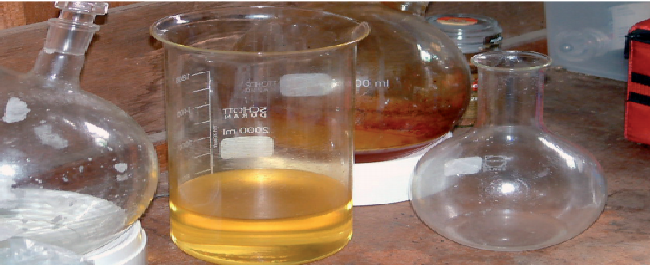Clandestine Drug Labs
Contamination from illicit drug manufacture, a risk to human health and the environment
The media gives plenty of attention to the discovery and dismantling of illicit drug labs, but there is little focus on cleaning up residual contamination after the police leave. Without remediation the health of future occupants could be at risk and it is the property owners who usually bear the costs of clean up.
Most clandestine drug labs are in domestic dwellings
In Australia, police are identifying increasing numbers of clandestine drug labs and the majority are found in domestic dwellings. Most of these labs produce methamphetamine, a process involving toxic, flammable, and corrosive chemicals. Environmental regulators class methamphetamine production as “a contaminating land use”.
Contamination before, during and after drug manufacture
Manufacturing illicit drugs poses health and environmental risks before, during and after the drugs are produced. The “cooking” process generates chemical vapours and hazardous by-products. Contaminants can be absorbed into furnishings, walls and floorings, and carried in ventilation ducts. They are dumped into drains or stored in containers. Dumped or buried waste can contaminate water and soil.
Contamination is persistent
The significant waste produced by clandestine labs and any residual contamination that occurs can persist for long periods of time so people who later occupy the premises may be at risk. Regulators require landowners to remediate affected properties before they can be reoccupied.
Assessment and remediation
Even though Councils will request property owners to clean up contamination caused by illegal drug labs, only suitably qualified consultants are permitted to assess and remediate impacted sites. Firstly, they determine the level of risk presented by the site. High-risk sites may show signs of fires, explosions, toxic chemical stores, and waste dumps. The level of site contamination will inform the Remediation Action Plan. In more serious cases, consultants may propose demolishing structures while for low risk sites, specialised cleaning may be effective. Environmental consultants will manage the clean up and validation according to the same principles, objectives and procedures they apply to all contaminated sites.
Geo-Logix has been involved in a number of assessments and remediation projects for clandestine drug labs. Contact Ben Pearce bpearce@geo-logix.com.au for further information.
Document references
Clandestine Drug Laboratory Remediation Guidelines, 2011
NSW Remediation Guidelines for Clandestine Drug Laboratories, 2015

